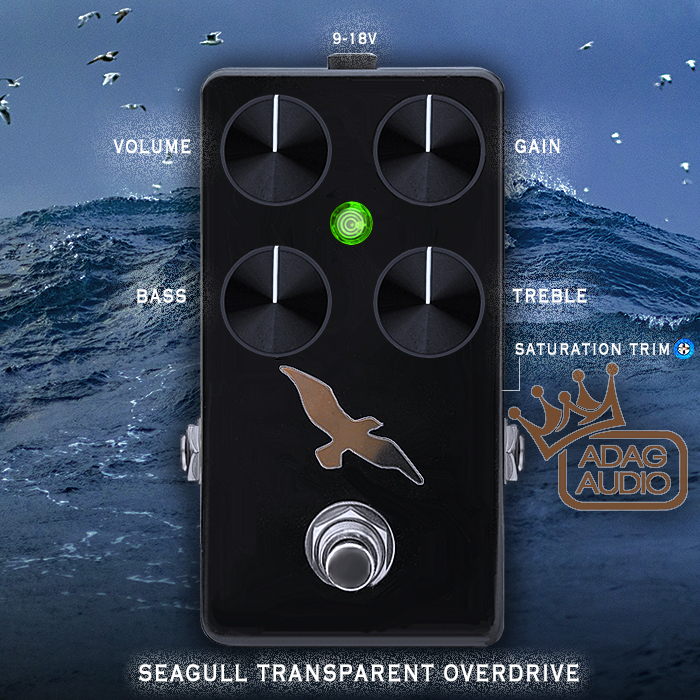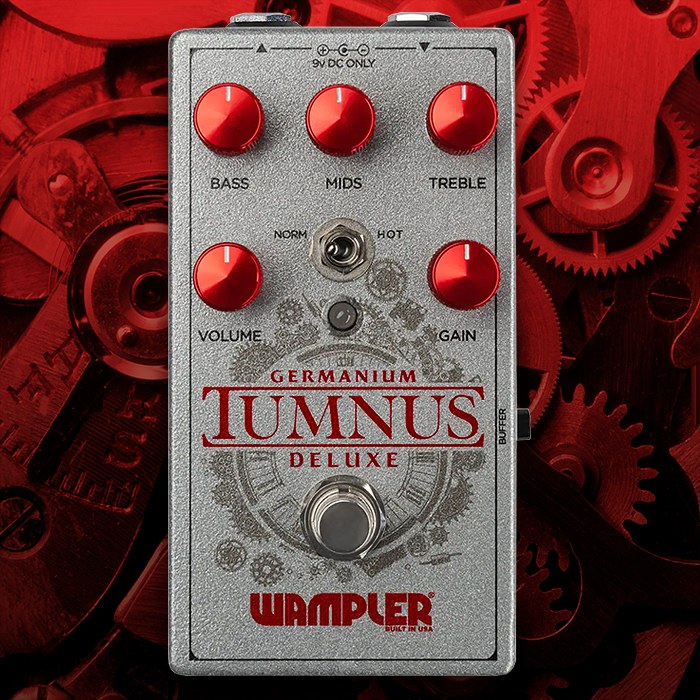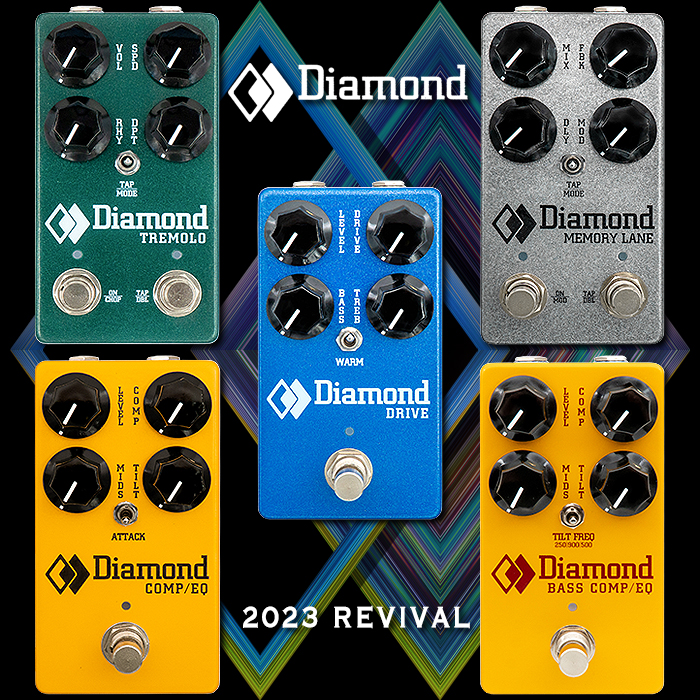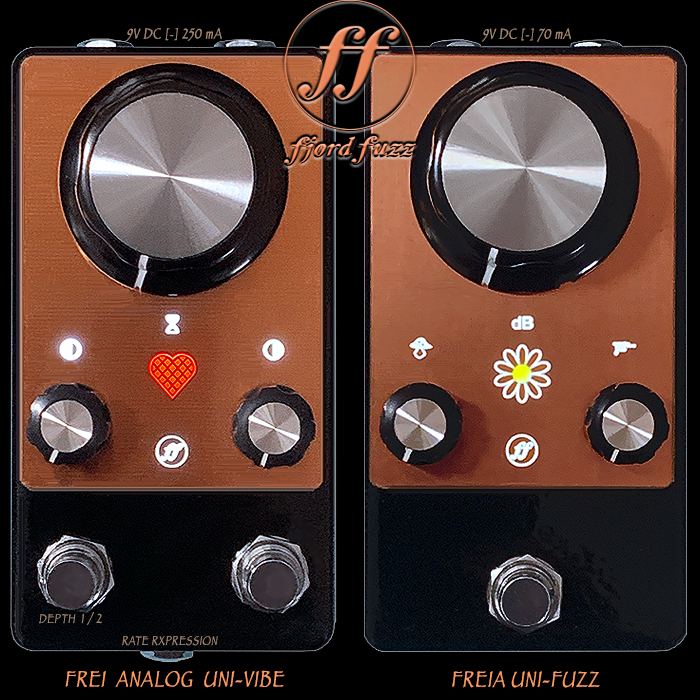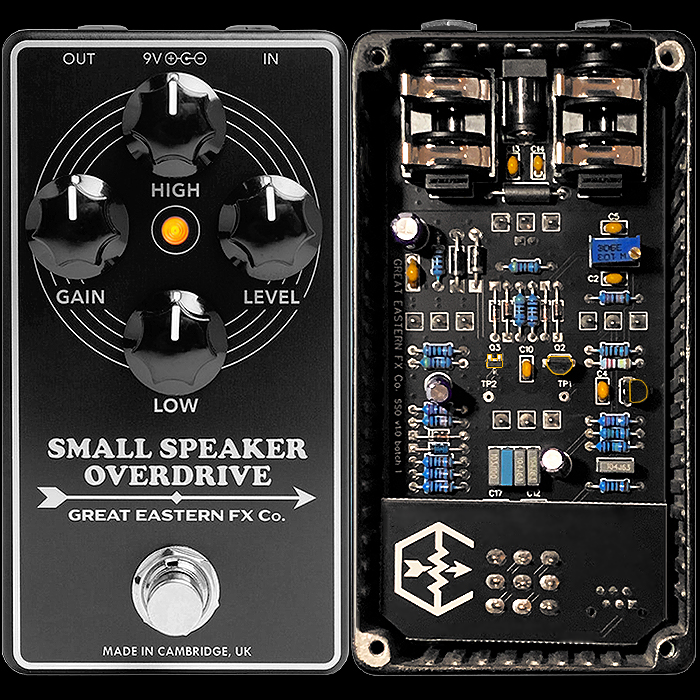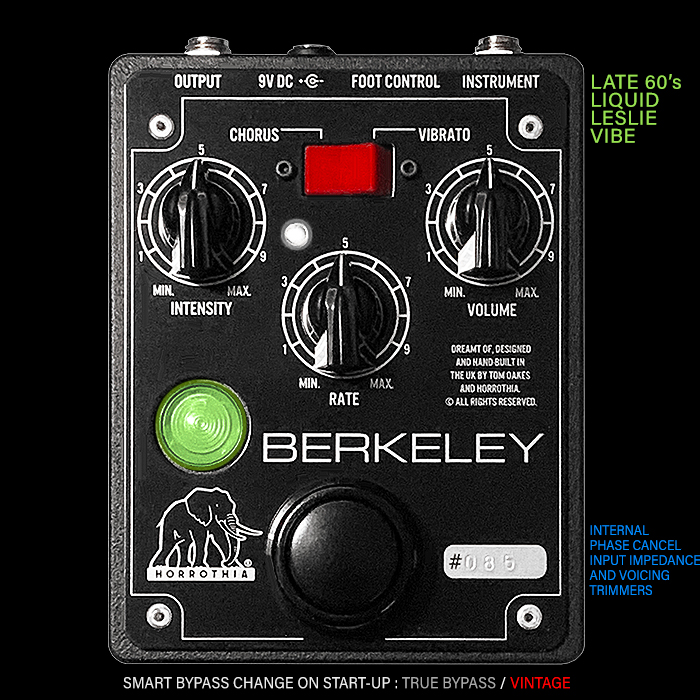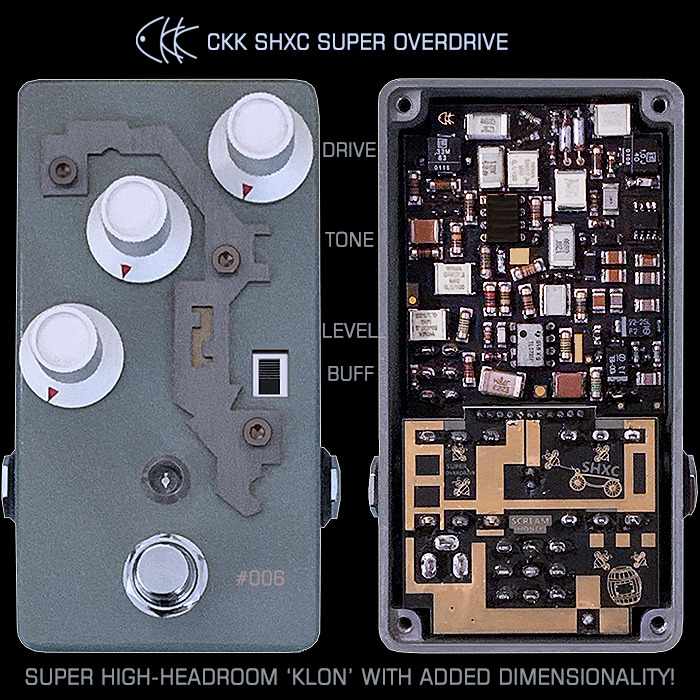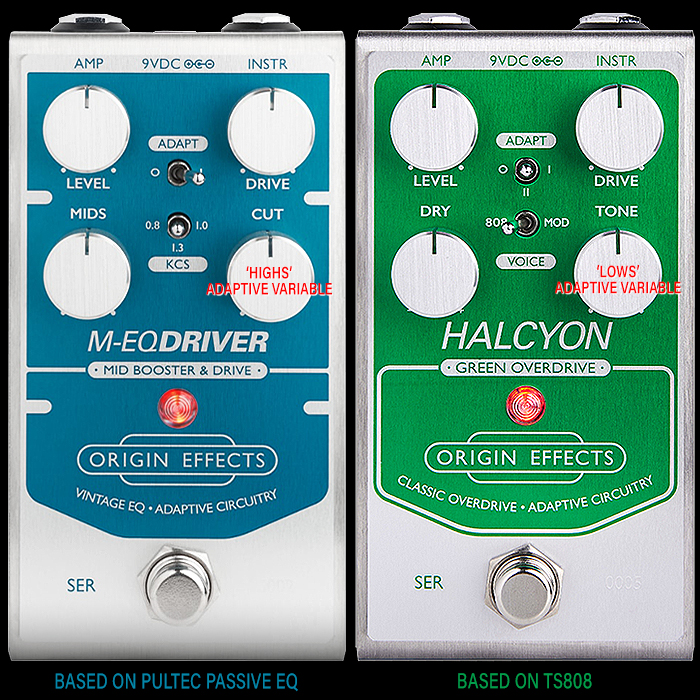Horrothia's Triage Discrete All-Transistor JFET Pre-Amplifier is a Beautifully Elegantly Textured Low to Mid Gain Overdrive
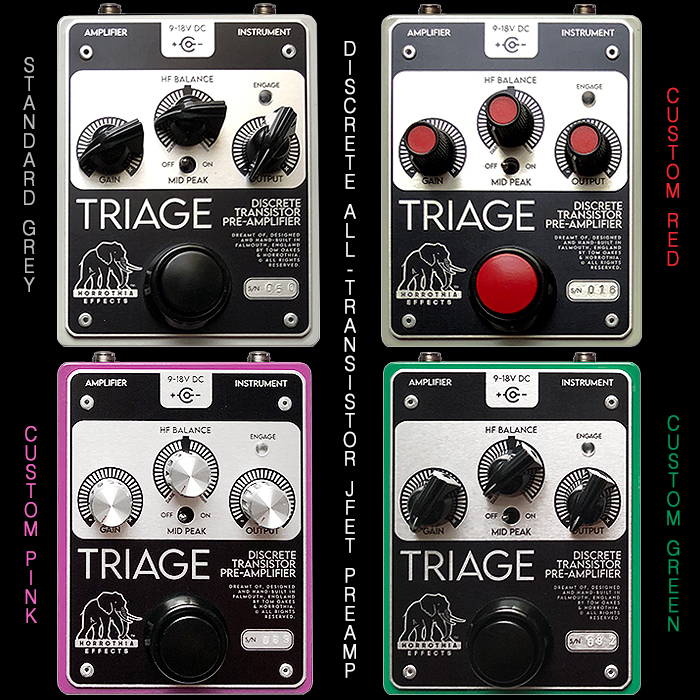
I’ve really enjoyed witnessing and observing Tom Oakes’ Horrothia Journey - from his first Type One single-knob Chorus Pedal, through to the cleanest and most elegant Teeth Low-Gain Overdrive, and onto the magnificent flagship Berkeley Vibe.
I think I commented at some stage that each progressive Horrothia release got more and more expensive - with the Berkeley nearly twice the price of the original Type One. And so it was entirely understandable that Tom’s next pedal should be a more affordable affair.
Those military-spec arcade style switches are very pricey, as are some of the knobs, and of course the large lenticular lens of the Berkeley. So Tom was determined to cut costs as sensibly as he could. The path to the Triage actually started with the Teeth circuit - where the new pedal was supposed to be a sort of sibling derivation of that - with more gain range and more texture, while leaving the various refinements to the Teeth original.
As it was, the Triage circuit took on a life of its own and evolved quite a distance away from the Teeth - where it’s now a pretty distinct circuit - but you could argue those circuits are at least cousins by association!
An early prototype of the Triage was a quite indistinct navy blue box with Boss-type silver-top knobs, and a straight-up regulation footswitch (As per Triage Preview #1 demo below). This was the model too that Tom had brought to the Stourbridge FX Expo show where I first made his acquaintance.
We had a lively discussion about Fonts and design values in particular - and seemed to be kindred spirits on that front. Tom’s Dad had been a sign-writer and later an automotive designer - and so Tom grew up with Letraset kits at home which obviously informed his later aesthetic choices with the Horrothia brand. The name was originally suggested by Tom’s Greek wife - where Horrothia is derived from the Greek word ’χορωδία’ meaning chorus.
In any case at the FX Expo I staunchly defended the brand aesthetic of the Horrothia range and helped to persuade Tom - the he really should retain the arcade switch and as many of the other quality components as costs would allow. Tom has extremely high ethics in terms of environmental impact - so he’s very careful where he sources everything from - in terms of being fully beholdent to a philosophy of sustainability.
I do feel I managed to persuade him that it was worthwhile to maintain as much as the brand character as he could - and as result - the Triage looks very much part of the same family - where Tom was able to simplify the kind of circuit he had made for the Teeth and thus produce the Triage more cost-effectively.
In fact the standard Triage has both the same arcade style switch and knob as the best looking pedal in the range - the flagship Berkeley of course. I had always wanted to get stuck into the range - but missed out on some of the earlier special editions - like the Type One with the larger knob - so I was unsure of where I would be best to start. After a conversation with Tom it made most sense to start at either end of the range -- with both the Triage and Berkeley.
I’m still trying to persuade Tom to update his Type One with the larger knob choice, and I would quite like the lenticular lens of the Berkeley too - to be integral on the Type One and Teeth also. That way the core quality mainline pedals could be defined and differentiated by their having the more elegant larger LED lens seen on the Berkeley.
Tom makes his pedals in lots of different custom editions - different colour enclosure body, and different knob choices in the main. So for the Triage the question was do I get one of the custom flavours - like the Red Knob edition, or the Standard / Classic edition. As my philosophy is very much for my readers to be able to get their hands on the very pedals I love, rate and recommend - then it made ultimate sense that my version of Triage should be the standard one - indeed as per S/N # 035 pictured below. Which by a fun coincidence is the one pictured on the Horrothia Triage page too.

So a very straightforward control topology of those 3 classic control knobs, but with an additional Mids switch which bumps up that frequency range, and goes from a full-range falter curve to a fully TS808 / Klon profile - only more so and varying with amount of gain. I've described the Mid Peak as dynamic as it starts as low as 4kHz when the Gain is at its lowest point, falling to 1.5kHz around noon, and to 1kHz with the Gain fully cranked. This way you get ‘sparkly brights’ with the gain down low, and crunchy and more grunt (less highs) when you dime it!
Tom most definitely has a signature character for his effects - which I would describe as extremely elegant and tasteful - where everything is set up fully within the Goldilocks zone. You can get a more expressive and aggressive output to emanate from those pedals - where you need to tweak an internal trim-pot or too to get up into that territory. I certainly cranked up the Voicing dial on the Berkeley for more 'Throb' - in fact I fully crank those dials, and then notch them back a touch.
And I did the same with the Triage where I adjusted the Clean Level trim-pot - which should more correctly be labelled Preamp Level - which rises as you crank the trimmer clockwise. So like with the Berkeley I fully cranked the tiny dial, and notched it back just a touch. Even though the Triage never really gets particularly raw and visceral. It certainly has a richly textured breakup, while the crunch on that remains relatively mild. This is for sure a Low to Mid gain pedal - but really the lower end of Mid Gain - or the stage before it starts touching on distortion.

If you like the pedal bright and sparkly then by all means run it at 18V and take advantage of that added headroom. At one stage I thought I preferred the pedal with the additional headroom sparkle. But I really prefer more breakup texture - so I run it mostly on the standard 9V.
I pretty much like it equally on full-range and Mid Peak - where I tend to have the Gain and Output both maxed - with the Tone / HF Balance ranging between 2 o'c and 4 o'c for different applications.
I would still largely qualify this as a fairly Low Gain pedal even though it reaches a very satisfactory level of Mid Gain - but it's still relatively mild in the grand scale of things - say versus something like a Klon / Klone even.
I would imagine fans of Greer's Lightspeed and Mentone's Red Snapper would really like this - and yes it has more gain and texture onboard than the Teeth - which is very much a Low Gain pedal - yet I still contend that the Mid Gain level here is relatively mild.
Tom's signature take as mentioned is always 'tasteful' and while you can typically extend the range a little on his pedals - things are not going to get edgy, mean or nasty. These are the epitome of elegance!
The Standard Grey Enclosure Triage like mine retails for £180 (and equivalent) and is available for purchase direct from the Reverb.com Horrothia Store right now. While you need to contact Tom about making you one of his typically more brightly coloured custom editions. I am very happy with my standard variant - which really makes a great matched pair with the Berkeley - both have predominantly black facia plates, and those same chicken-head style knobs. I'm actually really happy that Tom and I jointly decided on the Standard Edition.
How about you dear readers - are there some Horrothia fans among you?
I'm definitely picking up a Type One and Teeth OD next - I just need to wait and see if Tom brings to bear any of those possible changes we discussed. What do you think of my suggestions to roll out the larger LED to the Type One and Teeth, and go for the larger knob on the Type One too - which has actually already been done as part of a small custom run.
Demos









